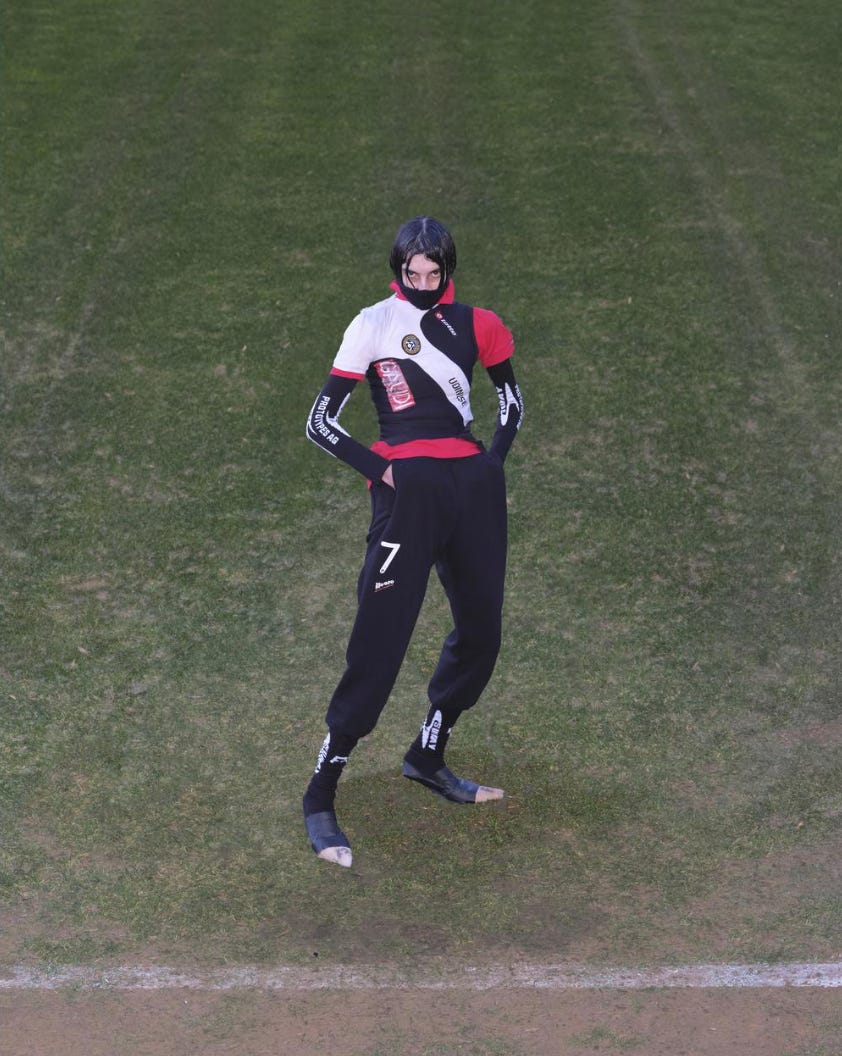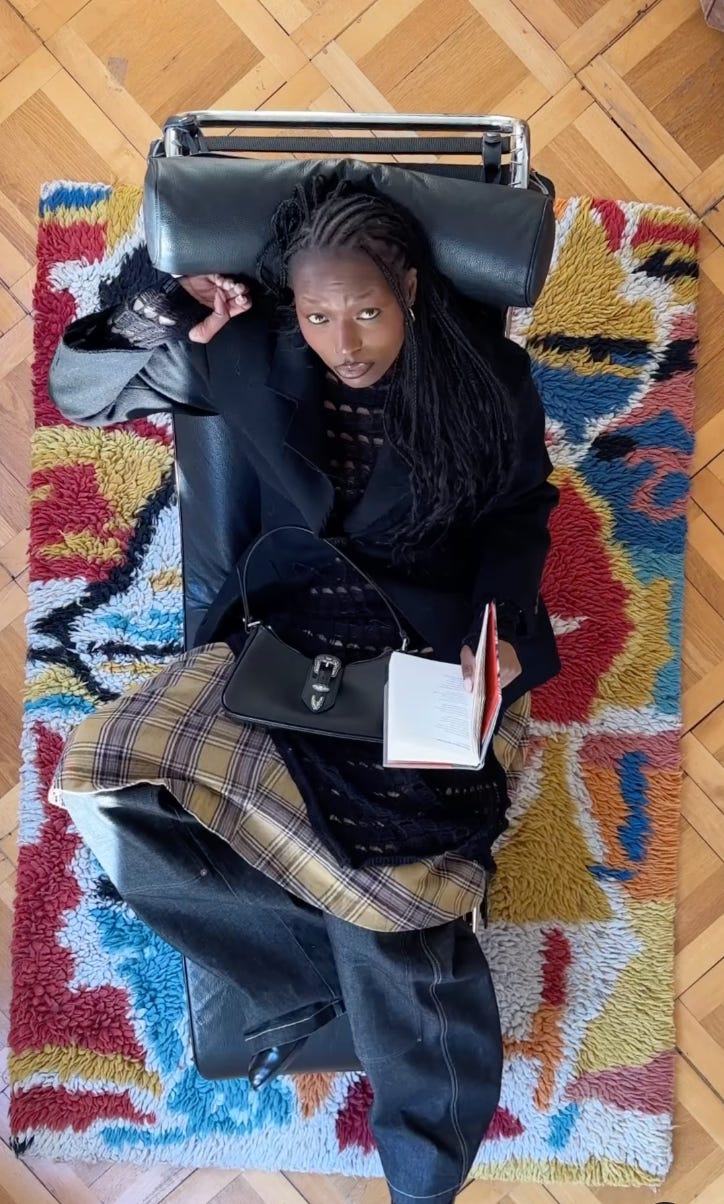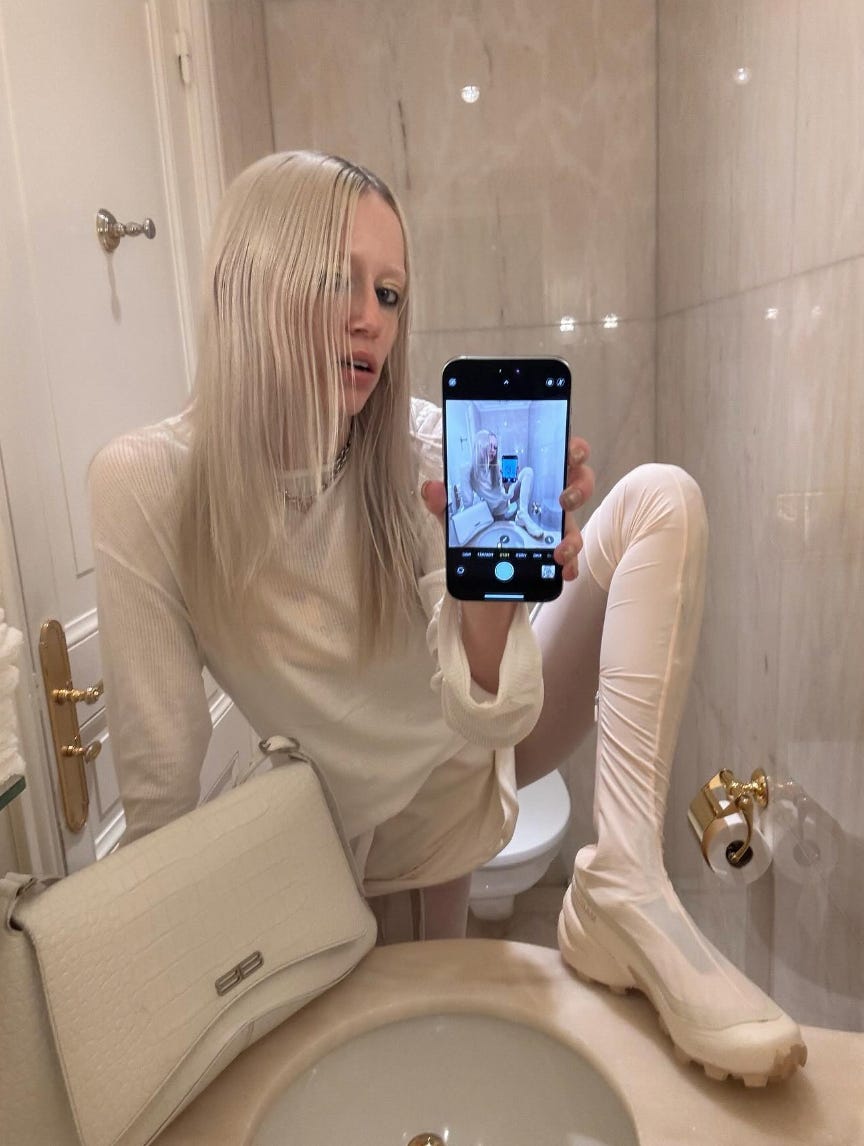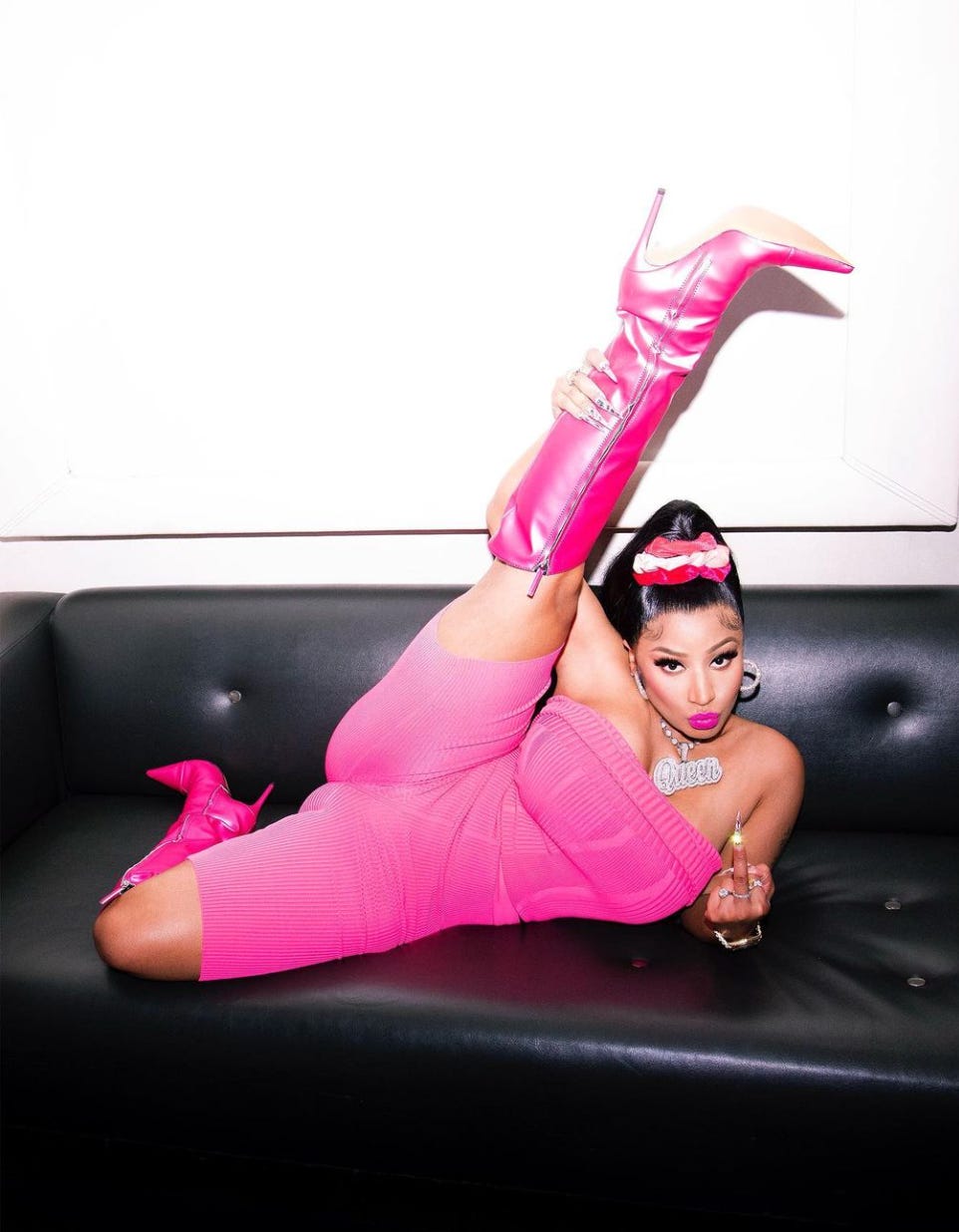Q̾u̾i̾c̾k̾ ̾F̾i̾r̾e̾: Is our body language evolving?
How social media is changing the way we carry ourselves.
MØRNING. We’re well aware that our body language, aka our nonverbal communication, can speak a thousand words. But as our online lives become our greatest theatre, our body language is evolving to match. So when did our pose du jour move from Tumblr hands to hoisting one leg on top of the bathroom sink? How are we navigating the pressure to perform with the fear of being perceived?
For this week’s QUICK FIRE, we’re charting the body language evolutions that spilled the tea on our shifting agendas. Read on if you like it hot.
Firstly, to understand these transformative shifts, let's lay out our evidence.
Exhibit A: “this pose is all over Betsy Johnson’s latest collaboration (and her selfies) - like complete inverse of bum out pose - reminds me of NPCs too” Letty, Creative Strategist
More than just a device for flexing your new pants, this hunch-backed slump pose is everywhere on our feeds. It's forced androgyny evades any commentary of prescribed bodily norms, and instead leans into what feels powerful and playful. More NPC than PC, and we’re here for it.
Exhibit B: Distorted selfies are helping us gain control over how we might be perceived. Rather than exhibiting pure self-gaze we’re aiming for self expression.
“Distortion either from a mirror, pose or camera angle makes a selfie that would be vain, suddenly creative. I think the everyday social media users are less concerned about being scroll stopping and more concerned about how they're perceived, bringing levity into selfies makes them less attention seeking and more a form of expression.” Tyla, Senior Creative Strategist
Exhibit C: Creeping, leaping and any other bodily contortion that can set us apart from the masses online. Acting like you don’t care is no longer cool or interesting online, and so getting creative is the final deviant act. Personality > sense.
“As individuals, the only power or action we seem to have left is 'consuming', and our resistance to that is that we all want to be 'creators'. By creating, we theoretically resist what's been imposed on us by modern capitalism. So playing with our body language is self art direction, a signal of ourselves as creators with agency, not passive consumers…” Rohani, Strategy Lead
Exhibit D: The mood pics era. Content that captures your mood and character over anything else. Whether that’s feeling pensive, cute or NSFW: the more ridiculous and/or unpredictable the better.
“Poses have become more about showcasing your character rather than flexing an outfit [...] sometimes it’s about channelling the character you feel in that outfit. Even with Drake, sometimes when he poses and pouts it's like his hair is tied up, he's feeling cute, you know what I mean?” Yus, Creative Strategist
Exhibit E: Provocative posing went mainstream mainstream, as the online world became a more inclusive place for expressing our multiple identities.
“I think that this kind of posing became mainstream through artists like Nicki Minaj and Megan Thee Stallion taking the hate and making it into a profit, which I think is quite slay” Mia, Intern
Exhibit F: The Gen Z baby face, a recent evolution of the Gen Z scrunch face, also known as ‘TikTok face’. Communicating a sense of ‘cuteness’ i.e. the cultural phenomenon so pervasive it’s considered an act of subversion. Let Gen Z be cute!
Exhibit G: Gen alpha phone hand. Whilst millennials continue to sigh over the inflexibility of their fingers when attempting the switch to a ‘Gen Z heart’, the original phone hand may already be due for a cult comeback.
 Tiktok failed to load.
Tiktok failed to load.Enable 3rd party cookies or use another browser
“What I’ve noticed in youth today is exaggerated and cartoonish body language. I believe it is a byproduct of watching Youtube Kid stars who exaggerate for click-bait and teens identifying more with their avatars’ than their irl bodies thus adopting their cartoonish mannerisms.[...] For the chronically online, they’ve got movement memes. Dabbing, flossing, shy fingers, the Mirella Eyebrow - these online oddities get posted somewhere, circulated for hilarity and memeing meaning then makes it back offline to signal what corner of the internet you’re on.” Emily, Digital Lead
Exhibit H: Finally, performance vs perception. We’ve become acutely self aware of how we present online, toying with anonymity one day, hardcore ‘internet-girling’ the next.
“you'll find me either pouting or with my phone covering my face. no in between!!!” Giorgia, Freelance Senior Creative Strategist
What does this mean for body language?
We've found ourselves at the height of self performance online. Leaving us wrestling between our desire to perform and our fear of being perceived. On the one hand we're trying on a roster of different characters for size, with 89% of us feeling like we are playing a character online (download the MØRNING fake vs fake trend report here). Using intentional weirdness to battle for individuality, or leaning into theatricality to align ourselves with our tribes. But the flipside of all this calculated performance is collective self awareness, a fear of being caught that's seeing us toy with anonymity and meta-candidness. So the question remains how communicative these new self-presentations are of our true meaning. Think twice before your next bodily morph!
That’s all for today! Would you prefer to go anonymous online or are you in your meta-candid era? Let us know below.
Words: Yus Ntahilaja, Emily Chapps, Rohani Coombes, Tyla Grant, Giorgia Aubrey, Mia Juul
Editors: Sui Donovan, Letty Cole
















Now this was an interesting read! Thank you for sharing!